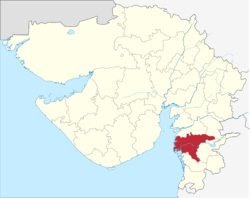In the district, horticulture crops occupy a relatively high proportion of gross cropped area, raising the economic viability of solar pumps here. Overall, water availability for irrigation in the district (based on ground water development and long-term trends of water level decline) is within the safe limit, enhancing long-term sustainability of solar pumps. For average crop revenue per holding, the district appears among the top 25 percentile of districts, implying higher investment capacity of the farmers here. The district has a relatively high penetration of banks in rural and semi-rural areas, facilitating higher access to institutional credit for farmers. The district appears in the group of districts, which show (very) low vulnerability towards climate change, as per an index constructed by CRIDA.
Deployment Approaches
| Approaches | Feasibility |
|---|---|
| Individually owned off-grid solar pumps | Limited Suitability |
| Solarisation of feeders | Suitable |
| Solar based water as a service | Limited Suitability |
| Promote 1 HP and sub-HP pumps | Limited Suitability |
| Solarisation of individual grid-connected pumps | Suitable |
Individually owned off-grid solar pumps
Limited Suitability
The district has ground water available within the safe limit, a comparatively high concentration of diesel pump users, and high crop revenue per holding, but has a relatively low disbursement of institutional credit. Long-term bank loans should be promoted in the district to enable the adoption of capital-intensive farm technologies, including solar pumps.
| Parameter | Value | Percentile |
|---|---|---|
| Number of cultivators reporting use of diesel pumps | 20,507 | 55 |
| Water Availability Index | 1 | 100 |
| Crop revenue per holding (INR) | 309,723 | 92 |
| Medium and long term institutional credit disbursed in a year (in INR Crore) | 28 | 49 |
Solarisation of feeders
Suitable
Given the relatively high cost of power supply for the respective DISCOM, a comparatively high extent of feeder segregation, and a high penetration of electric pumps, solarisation of the feeders would be a recommended way to promote solar-powered irrigation in the district. It would ensure the rapid and cost effective solarisation of irrigation power at a large scale.
| Parameter | Value | Percentile |
|---|---|---|
| Actual cost of power supply (INR/kWh) | 6.06 | 55 |
| Extent of feeder segregation | 100% | 69 |
| Proportion of cultivators reporting use of electric pumps | 18% | 66 |
Solar based water as a service
Limited Suitability
Groundwater availability in the district is within the safe limit. But, a rather low concentration of small and marginal farmers and a relatively low proportion of unirrigated area make it difficult to promote solar-based irrigation through the water-as-a-service model here.
| Parameter | Value | Percentile |
|---|---|---|
| Water Availability Index | 1 | 100 |
| Proportion of small and marginal cultivators | 71% | 25 |
| Unirrigated net sown area as a share of total net sown area | 21% | 23 |
Promote 1 HP and sub-HP pumps
Limited Suitability
The district has groundwater availability within safe limit and a relatively high proportion of horticulture crops under gross cropped area. But, a rather low concentration of marginal farmers, and a comparatively low disbursement of institutional credit to them make it difficult to promote 1 HP and sub-HP pumps here.
| Parameter | Value | Percentile |
|---|---|---|
| Area under horticulture crops as a share of gross cropped area | 20% | 79 |
| Water Availability Index | 1 | 100 |
| Proportion of marginal cultivators | 44% | 26 |
| Medium and long term institutional credit disbursed in a year (in INR Crore) | 28 | 49 |
Solarisation of individual grid-connected pumps
Suitable
Given the relatively high rate of power subsidy for agriculture consumers, a comparatively high extent of feeder segregation, ground water available within the safe limits and a high penetration of electric pumps, solarisation of individual grid-connected pumps would be a recommended way to promote solar-powered irrigation in the district. It would ensure the rapid and cost effective solarisation of irrigation power at a large scale.
| Parameter | Value | Percentile |
|---|---|---|
| Water Availability Index | 1 | 100 |
| Actual cost of power supply (INR/kWh) | 6.06 | 55 |
| Extent of feeder segregation | 100% | 69 |
Leveraging Solar Pumps to Promote Policy Objectives
If you are deploying solar pumps in this district then you can further these policy objectives.
National Mission on Oilseeds and Oil Palm (NMOOP)
The relatively low share of oilseeds and oil palm crops under gross sown area in the district makes it a suitable candidate for promoting NMOOP. Solar pumps could meet irrigation needs for these crops and help farmers diversify their yields beyond cereals.
| Parameter | Value | Percentile |
|---|---|---|
| Area under oilseeds as a share of total cropped area | 43 |
Per Drop More Crop
In the district, crops suitable for drip and sprinkler irrigation occupy a relatively high proportion of gross cropped area, making it easy to adopt such high precision irrigation methods. Solar pumps, along with other efficient and precise water application devices, could be deployed under Per Drop More Crop to promote efficient irrigation.
| Parameter | Value | Percentile |
|---|---|---|
| Area under crops suitable for drip and sprinkler irrigation as a share of total cropped area | 0.54 | 89 |


